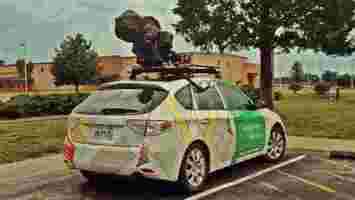The UK really wants escooters — but needs lots of rules because people are reckless
Despite a string of prematurely canceled trials, the UK‘s Transport Committee says that escooters should be legalized in the country.

There’s an important caveat, which I think no one will disagree with: they should be prohibited for use on pavements, BBC reports .
Escooter trials have been operating around England over the past few months, and general sentiments are that they aren’t going all that well. As seems to always be the case when escooter trials begin, people misuse them , they get parked in places they shouldn’t be , and they become the focus of conversation because of rule-breaking riders .
All that said, the Transport Committee believes the country is ready for them, whether privately owned or on ride-share schemes.
The committee is aware it won’t be easy, and the country still needs to develop appropriate legislation. Current trials are supposedly serving to inform lawmakers of how the devices are used and what kinds of crashes occur, to ensure “robust enforcement measures” are developed.
It’s also worth noting that these measures need to actually be enforced and the government shouldn’t overlook policing users of new mobility services to ensure their safe introduction. As we’ve seen with the various UK trials, the choices people make when using escooters create danger and risk for other road users. It takes a person with an escooter to break the rules , an escooter on its own is largely harmless — assuming it’s parked safely.
“E-scooters have the potential to become an exciting and ingenious way to navigate our streets and get from place to place,” committee chair Huw Merriman said. “If this gets people out of the car, reducing congestion and exercising in the open air, then even better.”
That said, “We need to ensure that their arrival on our streets doesn’t make life more difficult for pedestrians, and especially disabled people,” he added.
While the outcomes of escooter trials don’t paint a perfect picture, they’re doing their job and showing that the UK can benefit from the mobility option, but that people can’t really be trusted to use them responsibly. One part of mitigating that is strict legislation governing their use; then we just have to hope the rules are enforced or that people follow them at the very least.
SHIFT is brought to you by Polestar. It’s time to accelerate the shift to sustainable mobility. That is why Polestar combines electric driving with cutting-edge design and thrilling performance. Find out how .
It’s 2021, and the Netherlands still invests millions to support cycling
This article was originally published by Christopher Carey on Cities Today , the leading news platform on urban mobility and innovation, reaching an international audience of city leaders. For the latest updates follow Cities Today on Twitter , Facebook , LinkedIn , Instagram , and YouTube , or sign up for Cities Today News.

The Hague will invest €65 million (US$79 million) into its cycling infrastructure over the next five years as part of a plan to increase cycling numbers 50% by 2040.
Through its Plenty of Space for Cycling Program 2020-2025, the Dutch city will improve safe cycling infrastructure and facilities while encouraging more groups to use bicycles for daily commutes and tourism.
Robert van Asten, Deputy Mayor for Mobility, said: “Cycling is only becoming more popular thanks to electric bikes, cargo bikes, and bike-sharing.
“[It] is healthy and cyclists do not cause any dangerous gas emissions or take up much space. By providing good cycle routes and by making cycling more accessible, we can ensure that even more residents choose to get around by bike.”
While cycling is already one of the most popular modes of transport in The Hague, the city wants cycling to become its primary mode, and measures under the plan include: improving the flow of traffic at intersections; replacing 13 kilometers of brick cycle paths with paved paths; and creating 40 new parking facilities in neighborhoods and shopping streets and near tram and bus stops.
The city will also provide bicycle lessons and service points, and ensure every child has access to a bike through the ANWB Children’s Bicycle Plan .
The Hague has some of the highest levels of congestion in the Netherlands, according to TomTom’s 2019 Traffic Index .
Car-sharing
In addition to promoting active travel, other Dutch cities such as Amsterdam have focused on increasing car-sharing options in a bid to reduce the overall number of private cars on the roads.
The city has more shared cars than anywhere else in the country, and recently won the 2020 Autodeel Award – hosted by environmental group Natuur & Milieu and the Dutch Ministry of Infrastructure and Water Management – for its efforts.
In 2020, Amsterdam installed 600 public charging points for shared electric carsand announced 700 new car-sharing parking permits that allow drivers to park and leave their shared cars for pick-up in certain designated areas.
It also incorporates shared vehicles in its municipal fleet and works closely with car-sharing services to coordinate activities across the city.
Nationally, the number of car-share users has grown to around 730,000, with the Dutch government’s target of 700,000 car-share users by 2021 through the Green Deal – Car Sharing II already achieved earlier this year.
SHIFT is brought to you by Polestar. It’s time to accelerate the shift to sustainable mobility. That is why Polestar combines electric driving with cutting-edge design and thrilling performance. Find out how .
Google Maps will soon suggest ‘eco-friendly routes’ by default
Google Maps is getting a new feature that encourages drivers to make more eco-friendly journeys.

The app will soon default to showing the route with the lowest carbon footprint, as long it’s got roughly the same ETA as the fastest path.
The new routing model analyzes data such as road incline and traffic congestion to optimize for lower fuel consumption.
When the eco-friendly route significantly increases the travel time, you’ll be able to compare the CO2 impact between the different routes. If you’d rather prioritize speed, you can adjust your preferences in Settings to show the fastest route as default (just know Mother Earth will be disappointed).
Google said the feature will launch in the US on iOS and Android later this year, “with a global expansion on the way.”
Google is also adding alerts to Maps that show drivers when they’ll be navigating through low emission zones.
The alerts will let drivers know if they’re allowed in the area. If not, they can choose another mode of transport of rake an alternative route.
The tool will launch this June in Germany, the Netherlands, France, Spain, and the UK, ahead of a wider rollout.
The new features are among over 100 AI-powered improvements to the app that Google says it’s on track to make this year.
One of the most eye-catching is bringing the Live View navigation tool to indoor locations.
The feature adds digital directions to video captured by your phone’s camera to show exactly where you should be going. It first launched in 2019, but initially only worked in outdoor locations.
The update expands it to airports, transit stations, and malls. In a blogpost , Dane Glasgow, VP of Product at Google Maps, explained how it will work:
Indoor Live Live is now available in some malls in the US, and will start rolling out in select airports, malls, and transit stations in Tokyo and Zurich in the coming months, “with more cities on the way.”
If that takes off, Google Maps might also need a tool for dodging all the travelers who are staring at their phones.
Then you need the weekly SHIFT newsletter in your life. Click here to sign up .